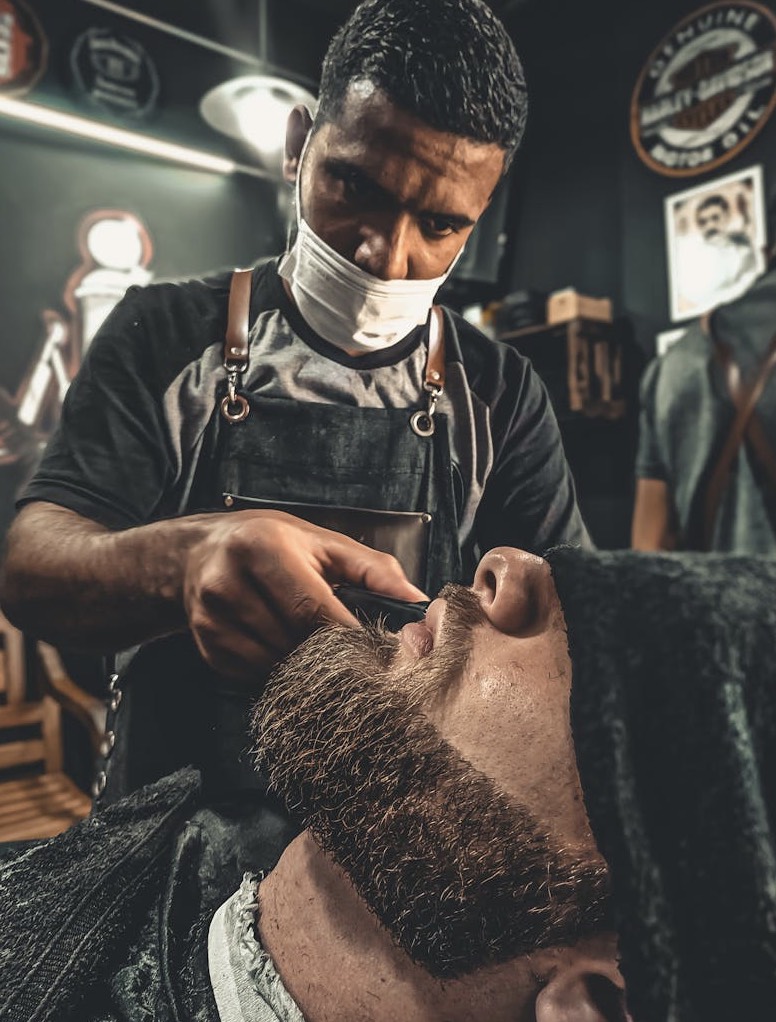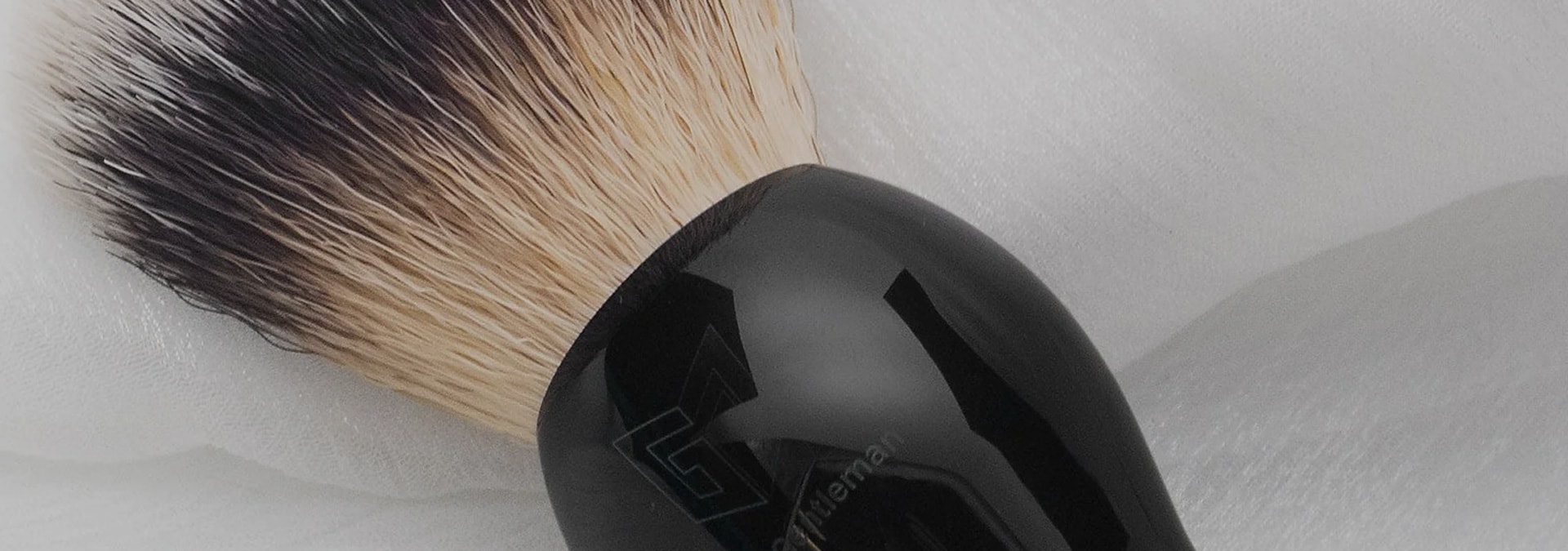Wet shaving, an age-old grooming practice, has stood the test of time and continues to be cherished by many for its meticulous approach and the sensory experience it offers. Unlike its dry counterpart, wet shaving involves the use of a pre-soaked blade and shaving cream or soap, which not only softens the beard but also provides a protective barrier between the skin and the blade. This method is often associated with a more comfortable and less irritating shave, making it a preferred choice for those with sensitive skin.
The charm of wet shaving extends beyond its practical benefits. It is a ritual that has been passed down through generations, embodying a certain level of craftsmanship and self-care. It's an art form that has transcended mere hygiene to become a symbol of personal elegance and refinement. From the meticulous preparation to the final stroke of aftershave, wet shaving is a celebration of the senses and a testament to the enduring appeal of a classic grooming routine.
Wet shaving is not just an art; it is also steeped in science that prioritizes skin care and the delicate balance of shaving technique. The process begins with the science of hydration, where warm water is used to open up the pores and soften the hair follicles, preparing the beard for a smoother shave. This is followed by the application of shaving cream or soap, which serves a dual purpose: it lubricates the skin to reduce friction and provides a protective layer that minimizes the risk of cuts and irritation.
The choice of shaving tools is also a scientific decision. Safety razors, for instance, offer a balance between closeness and safety, with their design allowing for adjustable blade exposure to cater to different skin sensitivities and beard types. Straight razors, on the other hand, demand a higher level of skill but provide an unparalleled close shave when used correctly.

The formulation of shaving creams and foams is another aspect where science meets luxury. High-quality shaving products often contain moisturizing ingredients like glycerin and aloe vera, which not only enhance the shaving experience but also contribute to post-shave skin health. Additionally, the pH level of these products is carefully balanced to match the skin's natural acidity, ensuring a comfortable shave without compromising the skin's natural barrier.
In essence, wet shaving is a symphony of science and artistry, where each step is meticulously crafted to deliver a grooming experience that is both effective and skin-friendly. It's a practice that respects the integrity of the skin while pursuing the artistry of a close, comfortable shave.
Wet shaving is a blend of traditional methods and modern refinements, creating a grooming ritual that is both effective and enjoyable. The process begins with a time-honored preparation that modern enhancements have only improved upon. Here's a step-by-step guide that marries the old with the new:
Preparation: Start with a warm, damp towel on the face to open the pores and soften the beard. This traditional step has been complemented by modern pre-shave products that further condition the skin and hair.
Lathering: Using a shaving brush, work up a rich lather from a high-quality shaving cream or soap. The brush not only helps to lift the beard but also exfoliates the skin, removing dead skin cells and allowing for a closer, smoother shave.
Shaving: With a sharp, clean blade, shave with the grain of the hair growth. Modern safety razors provide a close shave with less risk of nicks and cuts. The angle of the razor and the pressure applied are crucial; too much pressure can lead to irritation, while too little may not remove the hair effectively.
Strooking Technique: A traditional technique involves using multiple passes with different blade exposures for a close shave. Modern adaptations include using a multi-blade system that can achieve a close shave in fewer strokes.
Rinsing: Rinse the face with cool water to close the pores and remove any remaining lather. This step is often followed by a splash of toner or astringent, which is a modern addition to soothe and tighten the skin.
Aftercare: The final step is aftershave application. Traditional aftershaves contain alcohol for its cooling and antiseptic properties, while modern formulations often opt for alcohol-free options that are less drying and include moisturizing and healing ingredients like aloe vera and vitamin E.
Maintenance: Clean and maintain your razor regularly to ensure it remains sharp and hygienic. This modern practice extends the life of your tools and ensures a consistently high-quality shave.
By combining the best of traditional wet shaving techniques with modern advancements in products and tools, the wet shaving process becomes a seamless blend of science, artistry, and personal care. It's a ritual that has evolved over time, yet remains true to its roots, offering a personalized and effective grooming experience.

As we look to the future of wet shaving, we see a landscape that is both innovative and respectful of tradition. The art of wet shaving is not just preserved but is also being reimagined to meet the evolving needs and values of modern consumers.
Sustainability and Eco-Friendly Practices: There is a growing awareness and demand for eco-friendly products. Wet shaving is adapting by introducing razors made from recyclable materials and shaving creams with natural, sustainable ingredients. This shift towards sustainability is not just a trend but a commitment to reducing the environmental impact of grooming routines.
Technological Integration: Technology is playing an increasingly significant role in enhancing the wet shaving experience. Smart razors with built-in sensors provide feedback on shaving pressure and technique, helping to prevent cuts and irritation. Mobile applications offer personalized shaving plans based on individual skin types and beard growth patterns.
Personalization and Customization: The future of wet shaving is about tailoring the experience to the individual. From customizable razor handles to artisanal shaving soaps with unique scents, there is a move towards products that allow for personal expression and a more personalized grooming experience.
Education and Community Building: As wet shaving continues to grow in popularity, there is a greater emphasis on education. Online forums, social media groups, and workshops are providing platforms for enthusiasts to share knowledge, tips, and techniques. This sense of community fosters a deeper appreciation for the craft and helps to preserve the tradition for future generations.
Inclusivity: The wet shaving community is expanding to be more inclusive, catering to a diverse range of skin types, genders, and personal preferences. There is a recognition that the art of wet shaving is not limited to any particular group but is a universal practice that can be enjoyed by anyone who values a high-quality grooming experience.
As the wet shaving tradition evolves, JDK (Shenzhen) Makeup Brush Factory remains dedicated to crafting high-quality shaving tools. With over 16 years of industry experience, JDK has become a prominent manufacturer of premium shaving products, blending artistry with modern innovation. Their expertise is evident in every detail, from the design of their shaving brushes to the precision of their razors. For those passionate about the craft of wet shaving, JDK offers products that enhance the grooming experience while respecting the heritage of the practice. To explore JDK's range of shaving products and embrace the future of wet shaving,
By continuing to use the site you agree to our privacy policy Terms and Conditions.